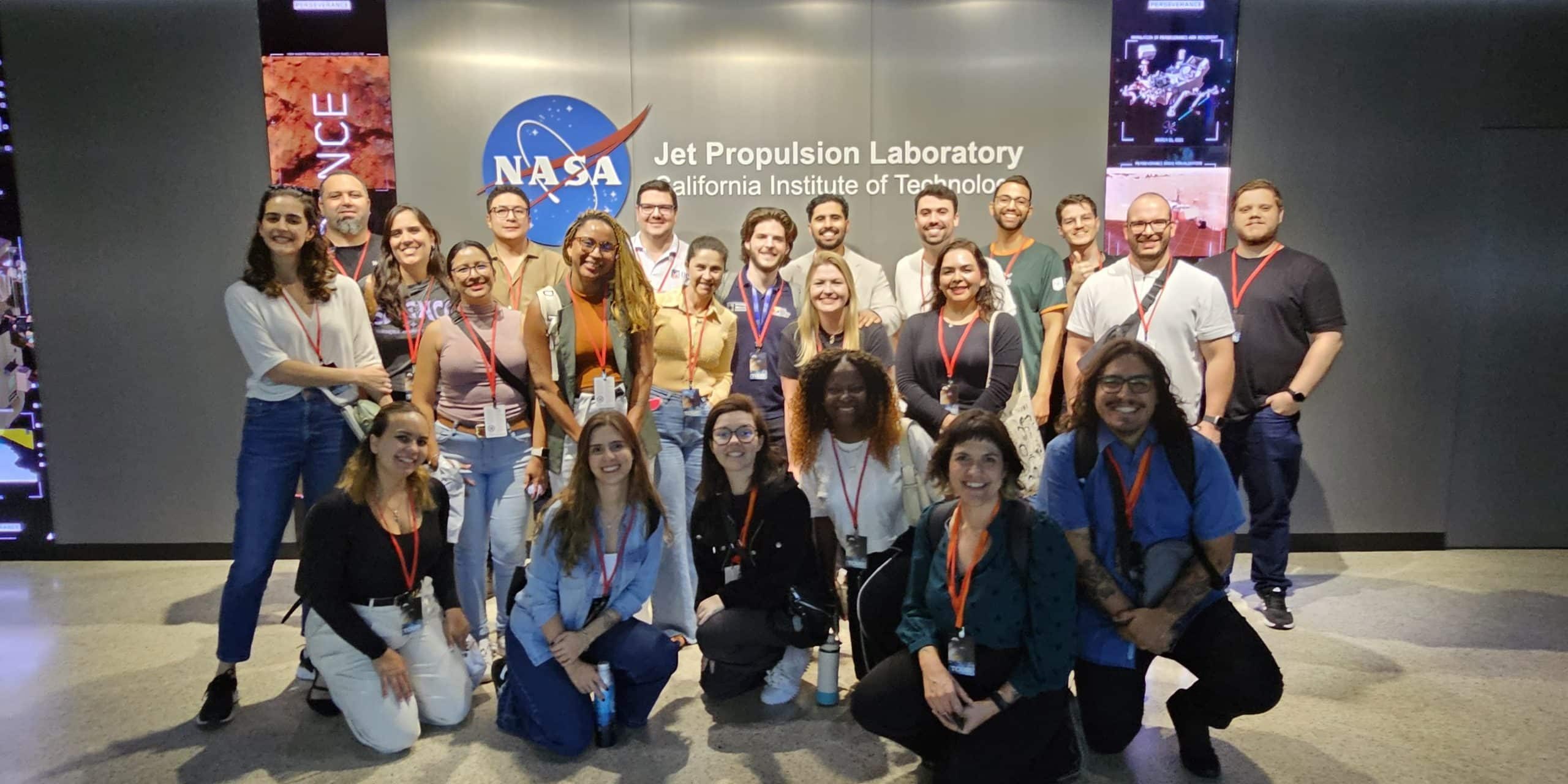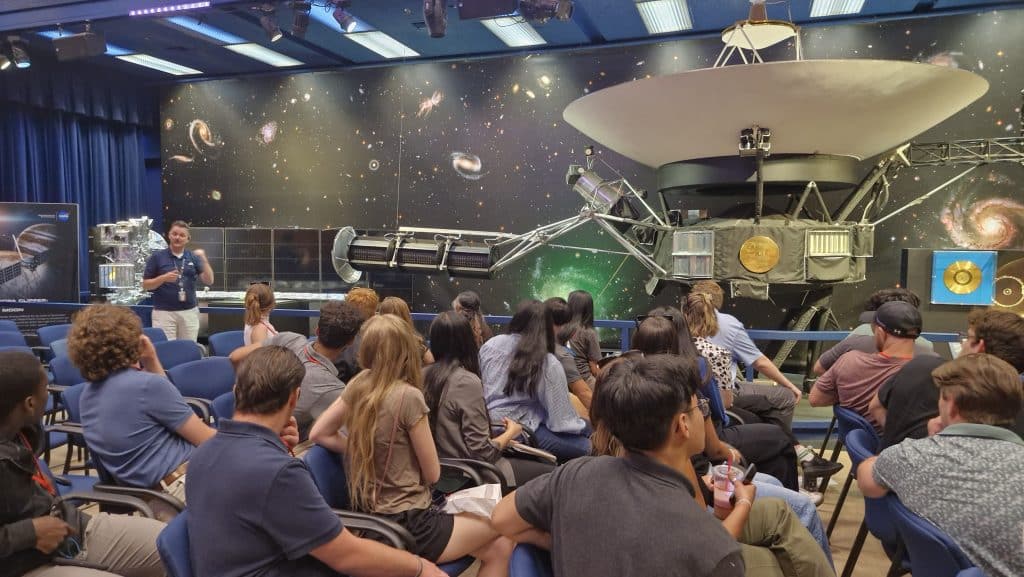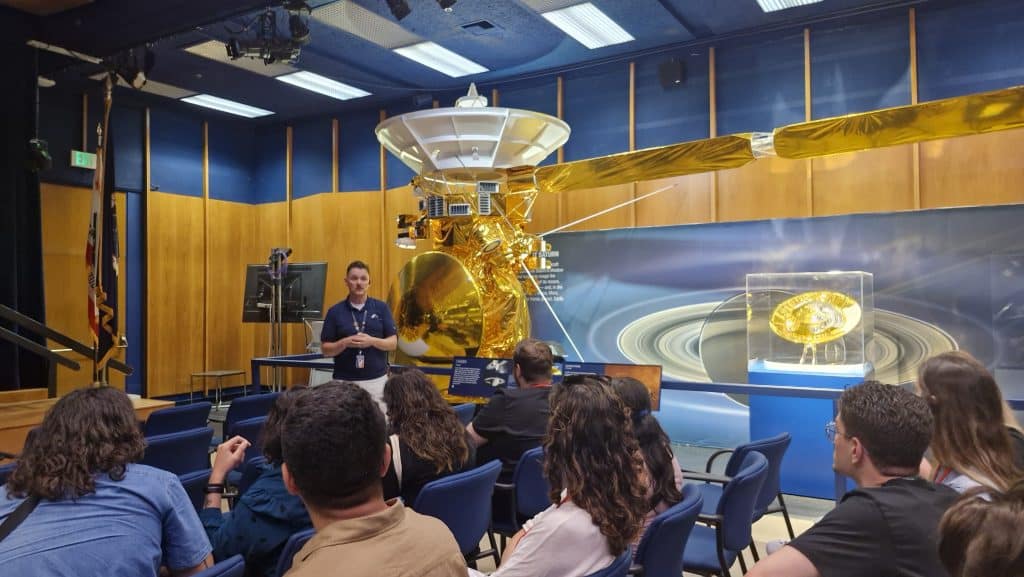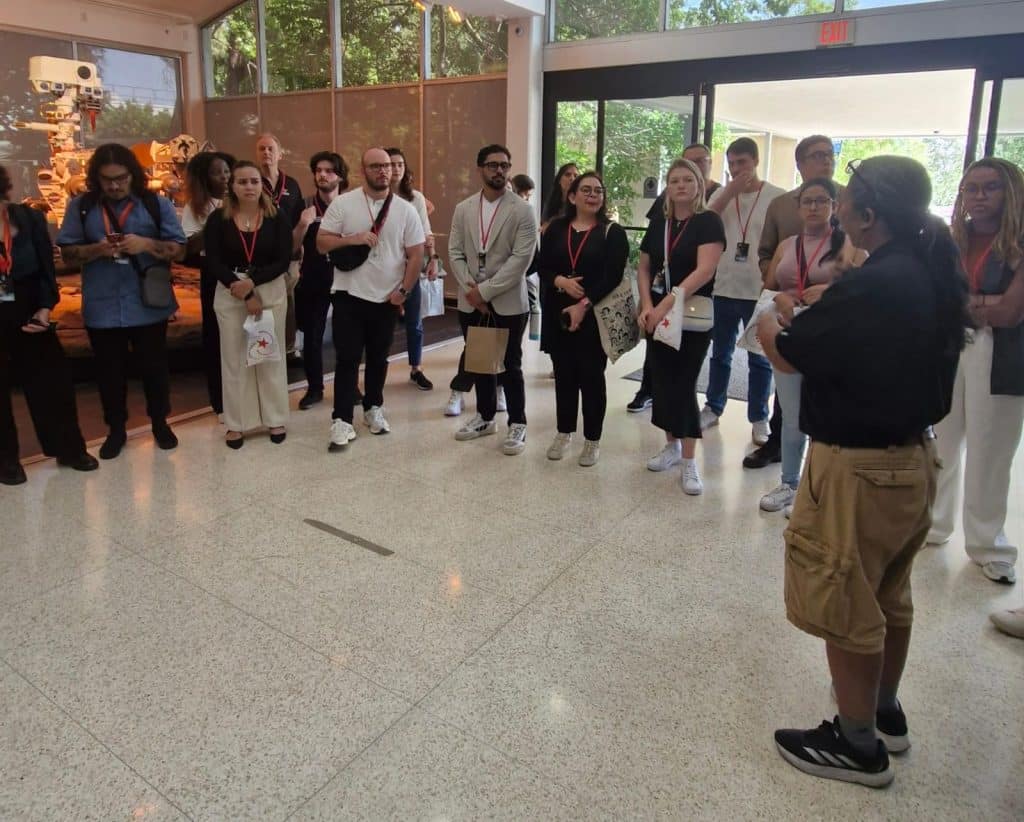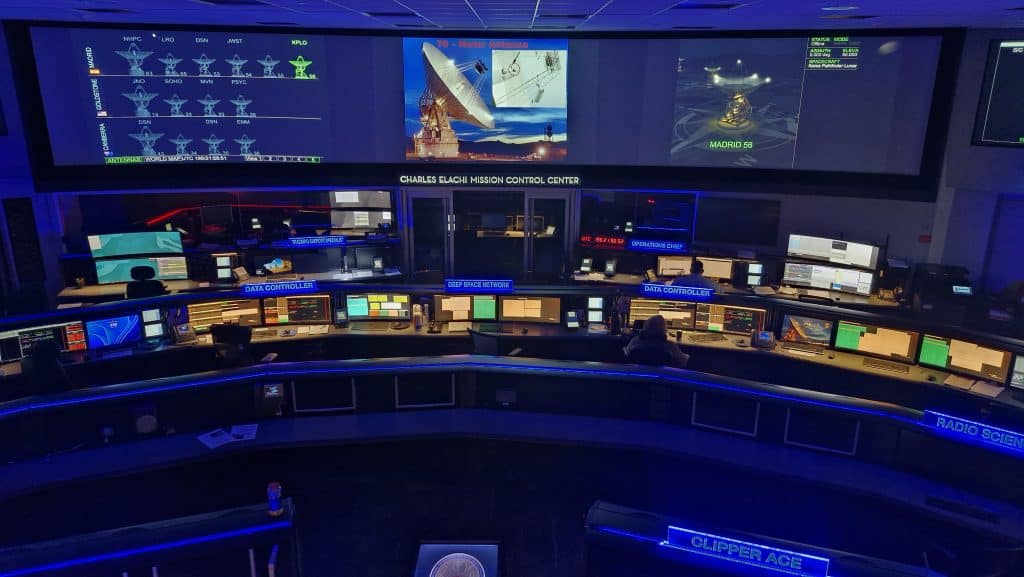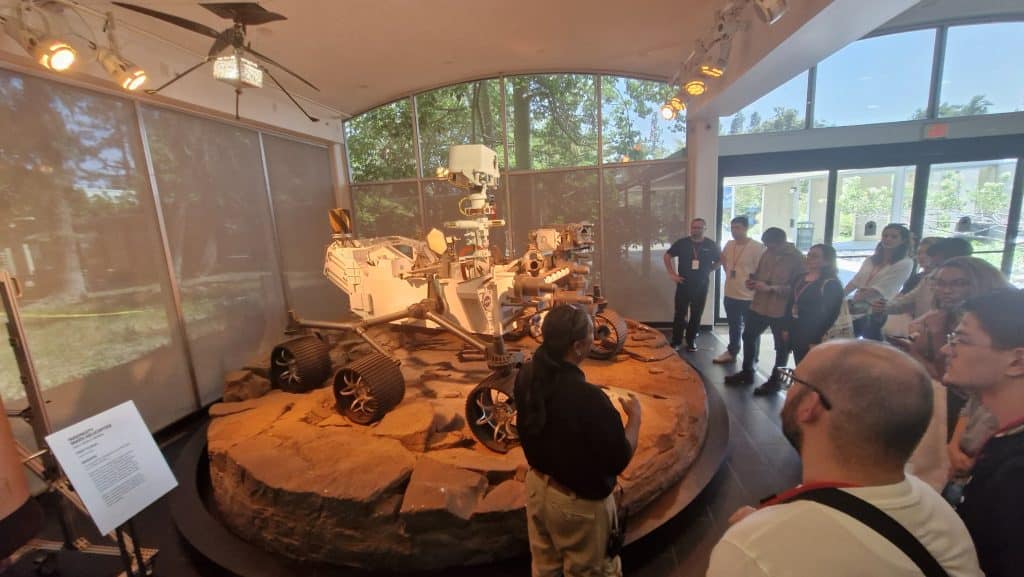Imagine having the chance to walk through the corridors where some of the most audacious space-exploration projects were born. That was exactly the experience our students from the University of La Verne (ULV) in California had when they visited the Jet Propulsion Laboratory (JPL), one of NASA’s leading laboratories.
Located in Pasadena, JPL is the laboratory in charge of creating probes and robots that explore the cosmos. Unlike NASA’s other major hubs, in Houston, Texas, where astronauts train, and in Cape Canaveral, Florida, the launch pad, JPL is devoted to uncrewed missions that carry human curiosity far beyond our planet.
During the tour, our students walked through several facilities that tell the story of space exploration. They stopped by the museum, with models of vehicles and instruments that have already traveled through the solar system; the auditorium, where they watched an exclusive presentation on how the lab operates; and even restricted areas where engineers are working on upcoming space missions.
One of the highlights was learning that missions that changed the way we understand the universe were born there, such as the Curiosity and Perseverance rovers, currently exploring Mars, and the legendary Voyager 1 and 2 probes, which are still sending data even after passing beyond the bounds of the solar system. Seeing up close to the place where these ideas left the drawing board and became reality was, without a doubt, inspiring.
Here are 5 fun facts:
- JPL is the only NASA center to have visited every planet in the solar system and is responsible for building every rover sent to Mars.
- JPL sends robots to places humans cannot yet reach, such as Mars, with its extreme cold and low gravity, and it built the robotic precursor probes of the Apollo program that demonstrated the ability to reach the Moon and achieve a soft landing.
- JPL has had continuous missions on Mars since 1997, operating 24/7 for more than two decades to look for signs of water and life.
- Each Voyager probe carries a Golden Record, a time capsule from Earth containing greetings in 55 languages, images, mathematical equations, city sounds, nature and animal sounds, and a broad musical selection spanning many genres and cultures. The record includes instructions for playback and a pulsar-star map showing Earth’s location, serving as a message to possible alien civilizations.
- The question of extraterrestrial life and whether we are alone remains open. JPL and NASA lead technological efforts to seek answers to age-old questions such as “How did all of this happen?” and “What will be the fate of the universe?” It is recognized that we are intimately connected to the universe, with every atom in our bodies forged in stars.
To learn about current, past, and future missions, visit:
https://www.jpl.nasa.gov/
If you want an international experience, to study with students from many nationalities, and to visit companies, check out the list of programs offered in partnership with the University of La Verne. This is exactly the kind of experience we aim to provide in IBS Americas’ international programs. Our goal is to combine solid academic knowledge with unforgettable hands-on experiences that broaden worldviews and prepare our students to lead in global settings.
More than simply visiting a research center, our students will return home with a wealth of learning that will certainly make a difference in their personal and professional journeys. Our commitment is to ensure students have the best experience, providing moments that transform their lives and careers.


